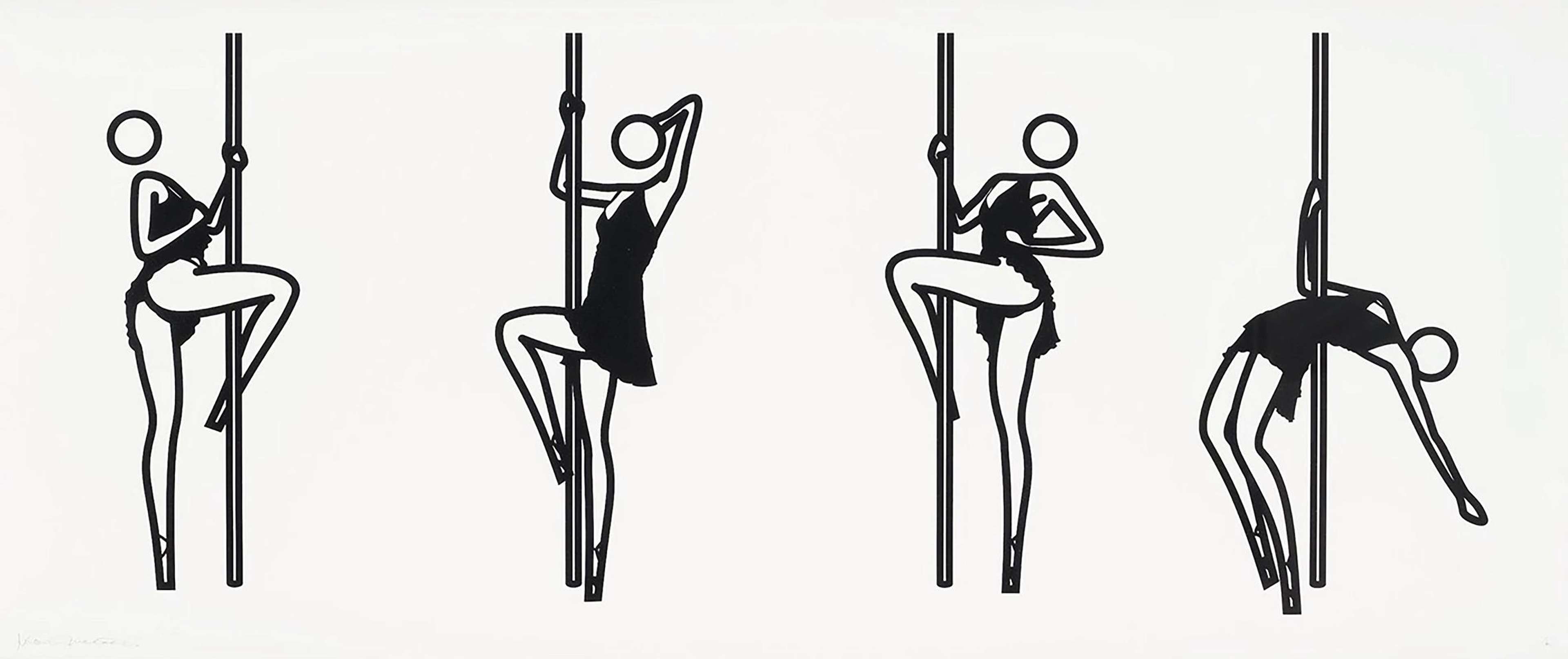This Is Shahnoza 3

This Is Shahnoza 3
Signed Print
Julian Opie
£7,500-£11,000
$15,000-$22,000 Value Indicator
$14,000-$20,000 Value Indicator
¥70,000-¥100,000 Value Indicator
€8,500-€12,500 Value Indicator
$80,000-$110,000 Value Indicator
¥1,560,000-¥2,280,000 Value Indicator
$10,000-$14,500 Value Indicator
There aren't enough data points on this work for a comprehensive result. Please speak to a specialist by making an enquiry.
57 x 136cm, Edition of 40, Screenprint
Auction Results

Track auction value trend
Meaning & Analysis
Showing a pole dancing figure in a sequence of static poses, This is Shahnoza 3 is a print from Julian Opie’s This is Shahnoza series from 2006. The figure is rendered in Opie’s trademark visual language, with thick, bold outlines and a blank circular head, thus she is an anonymised archetype of male desire.
As with many of Opie’s figures, the model in this print is anonymised by her featureless face and is thus reduced to a ‘type’, rather than being someone to be recognised. At the same time, Opie depicts the figure as always facing the viewer, and so by self-consciously subjecting herself to being looked at she maintains her sovereignty over the desiring gaze and disrupts the expectations of the viewer.
This is Shahnoza 3 is theatrical in its use of movement and motion. Wearing a black dress, the woman is depicted in a series of dynamic and alluring poses typical of choreography seen in strip clubs and popular culture. Opie unsettles the viewer’s assumptions of what constitutes high art by presenting an image that is more likely to be found in a ‘gentleman’s club’ than in an art gallery setting.